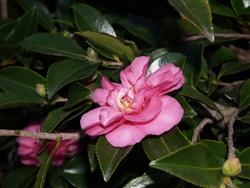
How to Grow Camellias
A course for gardeners, nurserymen, plant breeders, horticulturists, landscapers; or anyone who works with Camellias.
Beautiful camellias are great as ornamental plants in the garden - given the right soil conditions and climate they require little attention, once established, and yet there is so much to know about them.
This course is a wonderful way of learning about the different groups of camellias (eg. japonicas, sasanquas, reticulatas), their special characteristics, and their culture. Develops your understanding of soils, feeding, watering, pruning, planting methods, pest & disease control, propagation, & more. Improve your ability to identify different varieties (both common and uncommon), and how to use camellias to achieve desired landscape effects.